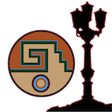Speaker
Description
The reconstruction of electrons and photons in CMS depends on topological clustering of the energy deposited by an incident particle in different crystals of the electromagnetic calorimeter (ECAL). These clusters are formed by aggregating neighbouring crystals according to the expected topology of an electromagnetic shower in the ECAL. The presence of upstream material (beampipe, tracker and support structures) causes electrons and photons to start showering before reaching the calorimeter. This effect, combined with the 3.8T CMS magnetic field, leads to energy being spread in several clusters around the primary one. It is essential to recover the energy contained in these satellite clusters in order to achieve the best possible energy resolution for physics analyses.
Historically satellite clusters have been associated to the primary cluster using a purely topological algorithm which does not attempt to remove spurious energy deposits from additional pileup interactions (PU). The performance of this algorithm is expected to degrade during LHC Run 3 (2022+) because of the larger average PU levels and the increasing levels of noise due to the ageing of the ECAL detector. New methods are being investigated that exploit state-of-the-art deep learning architectures like Graph Neural Networks (GNN) and self-attention algorithms. These more sophisticated models improve the energy collection and are more resilient to PU and noise.
This contribution covers the model optimization results and the steps to put it in production inside the realistic CMS reconstruction sequence. The impact on the electron and photon energy resolution and tests of the resiliency of the algorithm to the changing detector conditions are shown.
References
https://arxiv.org/pdf/2204.10277.pdf
Significance
The topic of this talk has been shown for the first time at ACAT2021. This new contribution
will cover the process to put the ML algorithm into production in the CMS software and the optimization of the model to obtain the final physics performance for electron and photon reconstruction and the best computational efficiency.
| Experiment context, if any | CMS |
|---|
